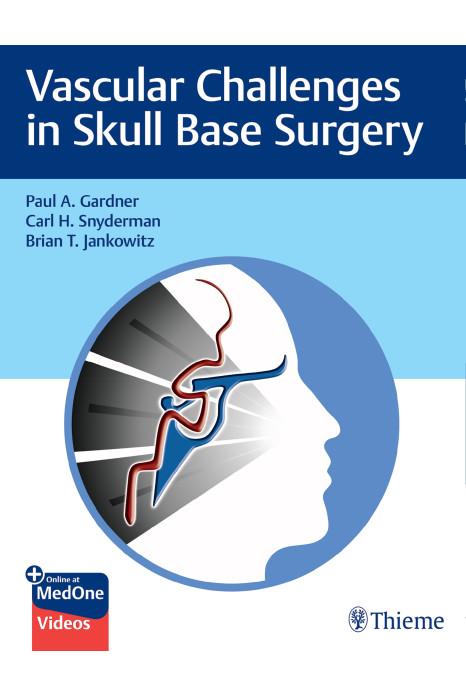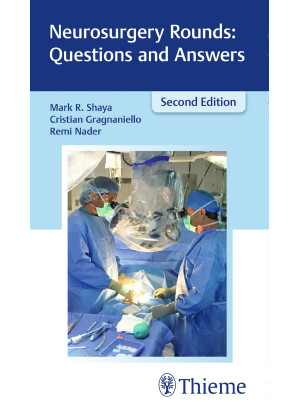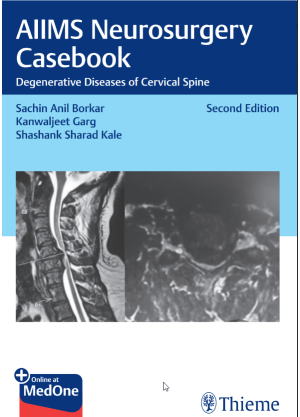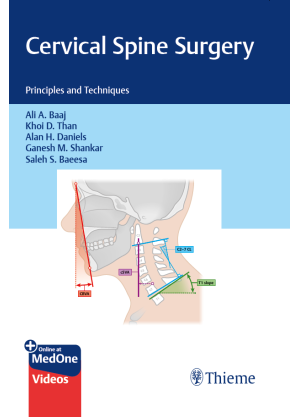The essential multidisciplinary guide for the prevention and management of vascular injury from master skull base surgeons
Vascular injury is the most significant source of morbidity or mortality during skull base surgery, regardless of the surgical approach. While skull base approaches always placed arteries and veins at risk, newer endoscopic endonasal approaches have introduced new challenges for the prevention and management of vascular injury. Greater anatomic knowledge, additional surgical options, improved instrumentation, advances in interventional neuroradiology, and enhanced training all contribute to successful outcomes. Vascular Challenges in Skull Base Surgery by renowned skull base experts Paul Gardner, Carl Snyderman, Brian Jankowitz, and distinguished contributors, fills a gap in the literature, with invaluable guidance on managing rare but potentially catastrophic surgical complications.
The full range of surgical approaches to the anterior, middle, and posterior cranial fossae are covered in 22 chapters. Diverse topics encompass open and endoscopic endonasal surgical approaches, endovascular techniques including balloon test occlusion and embolization, and standard and alternative bypass procedures. The last three chapters discuss venous considerations, neurophysiologic monitoring, and the role of training and simulation in vascular injury prevention. Key learning points, illustrated discussion of relevant anatomy, and tips and tricks are targeted at helping skull base surgeons leverage practical strategies to improve patient outcomes.
Key Highlights
- An impressive group of expert, highly-experienced surgeons share firsthand knowledge
- Insightful analyses of root causes and clinical pearls provide indispensable prevention tactics
- High-quality images and videos enhance visual understanding of surgical anatomy and techniques
Trainees and practicing skull base surgeons will greatly benefit from the collective knowledge and evidence-based injury avoidance strategies shared by authors who have learned to master the art of skull base surgery.
This book includes complimentary access to a digital copy on https://medone.thieme.com.
1 Vascular Anatomy of the Head and Neck/Circle of Willis
2 Evaluation of Tumor-Involved Vasculature (Including Balloon Test Occlusion)
3 Embolization of Skull Base Tumors
4 Vascular Supply of Local-Regional Flaps in Skull Base Surgery
5 Bypass in the Treatment of Skull Base Tumors
6 Alternatives to Standard Bypass Techniques for Skull Base Tumors (Including Direct IMax Bypass)
7 Skull Base Approaches for Aneurysm
8 Endoscopic Endonasal Aneurysm Treatment
9 Dealing with Major Intraoperative Vascular Injury During Endonasal Approaches to the Anterior Skull Base
10 Dealing with Major Intraoperative Vascular Injury
11 Dealing with Major Vascular Injuries During Endonasal Posterior Fossa Surgery
12 Vascular Challenges in Anterior Skull Base Open Surgery
13 Dealing with Vascular Injury During Middle Fossa Surgery
14 Posterior Fossa During Open Skull Base Surgery
15 Perforator Injury During Endoscopic Endonasal Skull Base Surgery
16 Perforator Injury During Open Skull Base Surgery
17 Endovascular Options to Treat Iatrogenic Vascular Injury and Tumor Involvement of the Skull Base
18 Extracranial Anterior Cranial Base Surgery for Vascular Tumors
19 Extracranial Lateral Cranial Base Vascular Tumor Surgery
20 Venous Considerations in Skull Base Surgery
21 Neurophysiologic Monitoring and Its Role During Cerebrovascular Injury
22 Simulation and Training—Preparing for Vascular Injury











